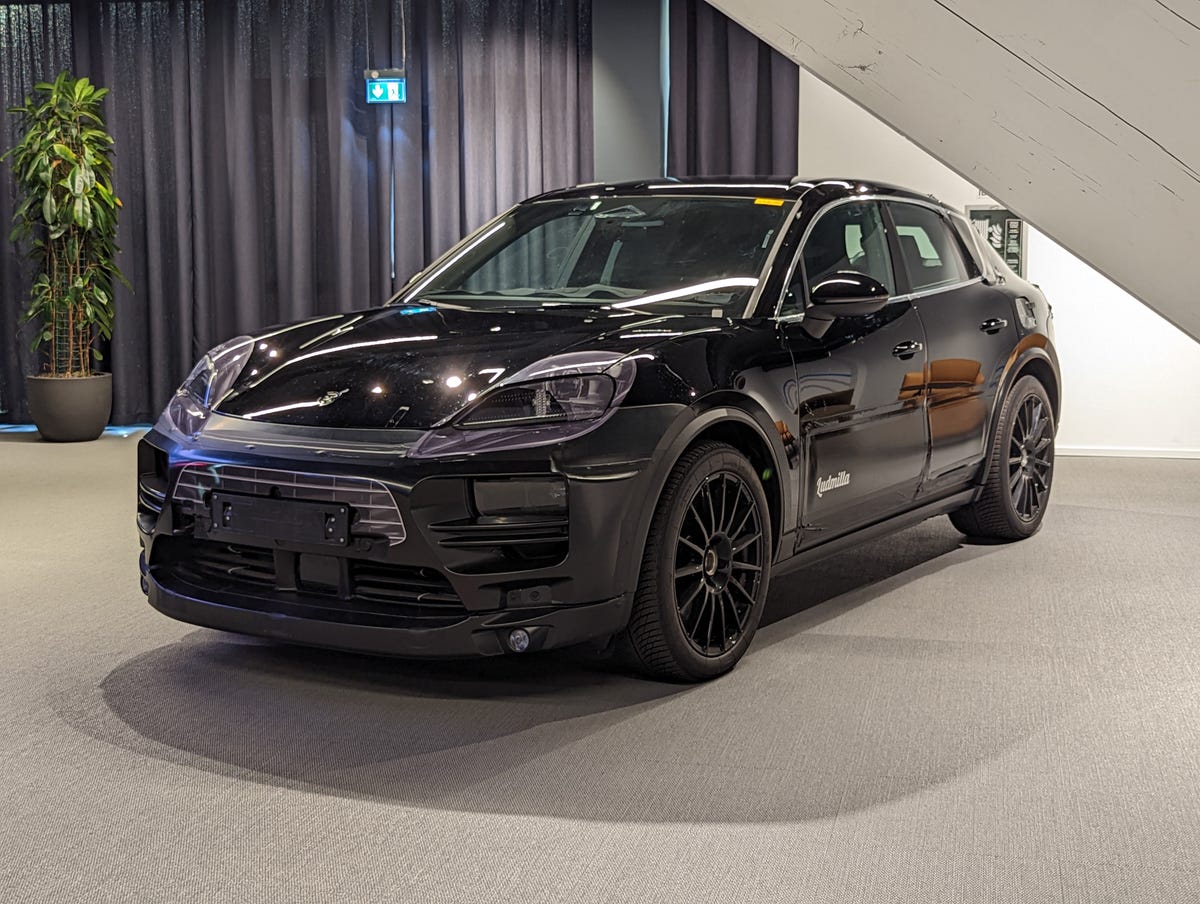2024 Porsche Macan EV: Everything We Know So Far – CNET [CNET]
The new Macan EV will be the first Porsche vehicle based on the next-generation Premium Platform Electric, a new 800-volt EV architecture developed in partnership with sister company Audi that promises improved range and efficiency over the Porsche J1 platform used on the Taycan family of electric sedans and wagons, while retaining the excellent driving dynamics buyers and enthusiasts have come to expect from the Porsche brand.
The Macan EV will be offered with dual-motor electric all-wheel drive, but the platform supports single-motor rear-drive for the future. Permanent magnet synchronous e-motors will be used with thermal efficiency improvements coming from a new double-V magnet arrangement, upgraded water jacket cooling and the use of silicon carbide as the semiconductor material in the power supply unit, rather than silicon. Porsche’s so-called Performance Rear End layout mounts the rear drive unit directly to the chassis for better response and positions the rear electric motor behind the axle (rather than ahead of or coaxial with it) for improved packaging and to add a bit of that 911-inspired rear-motor weight balance to the Macan’s performance DNA. Just a touch, though — overall, we’re still talking a fairly even 48:52 distribution.
Up to 22-inch wheels will be available on the Macan EV with a more dramatic staggered fitment (with wider contact patches at the rear) than the combustion-powered Macan. This will help to complement the EV’s rear-biased weight distribution and power delivery. The rear axle is also home to an electronically controlled differential lock.
Together, we can expect up to 450 kilowatts of power from the dual-motor Macan EV (around 603 horsepower) and more than 738 pound-feet of torque. Not too shabby.

A new lithium-ion battery pack will power the new Macan with a capacity in the neighborhood of 100 kilowatt-hours. The pack is split into 12 modules composed of stacked prismatic cells with a different chemistry from the Taycan’s cells. Speaking of the Taycan, Porsche took a long look at the relatively low levels of battery degradation on its first EV and surmised that perhaps it had been too conservative. For the Macan, it’s unlocking more of the battery’s potential, only holding back around 2 to 4% of the max capacity for conditioning rather than the more common 10% reserve. That means more usable range for owners.
Range estimates haven’t been released, with Porsche only stating that the Macan EV’s range will be as good as or better than the Taycan (currently around 200 to 250 miles for the 2023 model year), despite its more upright aerodynamic profile. A number that begins with a “3” would be nice, but only time will tell — Porsche certainly isn’t just yet.
We do have an idea of how fast the Macan will charge. Its 800-volt battery and charging system will support up to 270-kW DC fast charging with the goal of zapping from 5% to an 80% state of charge in just 25 minutes.
The electric SUV will feature a new Integrated Power Box internal charging unit that integrates DC conversion, AC charging circuitry and AC heating hardware into one compact unit that sits just above the rear motor. The IPB is also responsible for one of the Macan EV’s weirdest charging party tricks. If connected to a 400-volt DC charger, the IPB can split the 800-volt battery into two virtual 400-volt battery packs, quickly equalize their charge state then charge them in parallel more quickly than the full stack could together. With the vast majority of US DC charging stations being 800-volt anyway, most drivers won’t need this capability, but it’s a “nice to have” if you find yourself in a part of the country (or the world) that uses 400-volt stations.
The Macan EV’s implementation of the PPE platform will feature a double wishbone front suspension, a multilink rear axle and, for the first time, rear-axle steering with up to 5 degrees articulation. Rear-steer promises improved agility and a smaller turning radius at low speeds and enhanced stability when changing lanes at highway speeds. Steering inputs and feedback are fed through an Porsche-developed steering booster that claims to amplify desirable road characteristics — surface characteristics, grip and slip, for example — while tuning out undesired inputs like fingertip-numbing vibration.
The small SUV will also feature two-valve active dampers and an air suspension that is able to lower the ride height at high speed to improve range and in a Sport mode to boost driving dynamics — both of which are controlled via Porsche’s Active Suspension Management software.
Porsche expects to begin production and deliveries of the upcoming Macan EV sometime in 2024. We expect to learn more details about the electric small SUV’s design, range and pricing leading up to that launch window.

![2024-porsche-macan-ev:-everything-we-know-so-far-–-cnet-[cnet]](https://i0.wp.com/upmytech.com/wp-content/uploads/2022/11/96398-2024-porsche-macan-ev-everything-we-know-so-far-cnet-cnet.jpg?resize=800%2C445&ssl=1)
![2020-dodge-challenger-super-stock-gives-you-807-hp-for-$81,090-–-roadshow-[cnet]](https://i0.wp.com/upmytech.com/wp-content/uploads/2020/08/7715/2020-dodge-challenger-super-stock-gives-you-807-hp-for-81090-roadshow-cnet.jpg?resize=300%2C200&ssl=1)
![us-treasury-bars-americans-from-using-tornado-cash-crypto-mixer-–-cnet-[cnet]](https://i0.wp.com/upmytech.com/wp-content/uploads/2022/08/80728-us-treasury-bars-americans-from-using-tornado-cash-crypto-mixer-cnet-cnet.jpg?resize=390%2C205&ssl=1)
![best-mattress-for-stomach-sleepers-2021-–-cnet-[cnet]](https://i0.wp.com/upmytech.com/wp-content/uploads/2021/09/39038-best-mattress-for-stomach-sleepers-2021-cnet-cnet.jpg?resize=390%2C205&ssl=1)